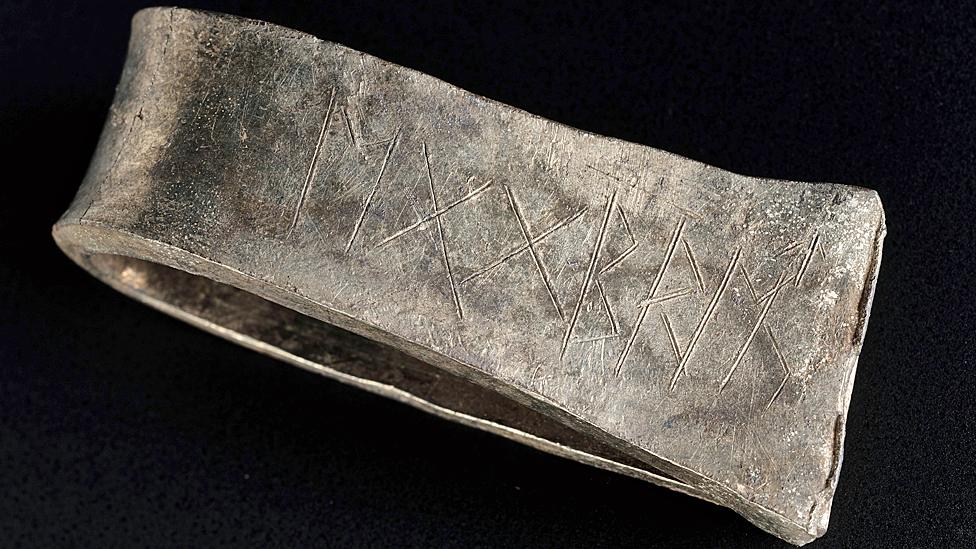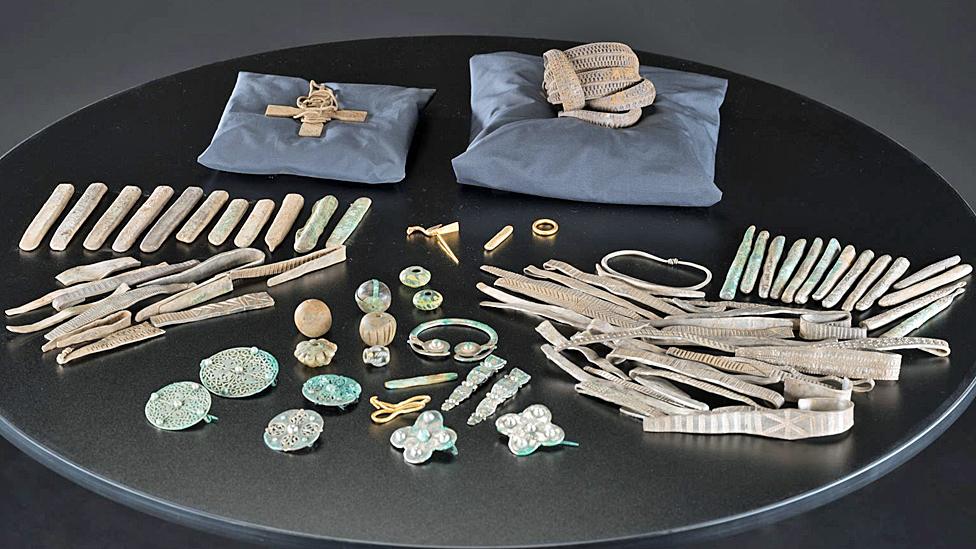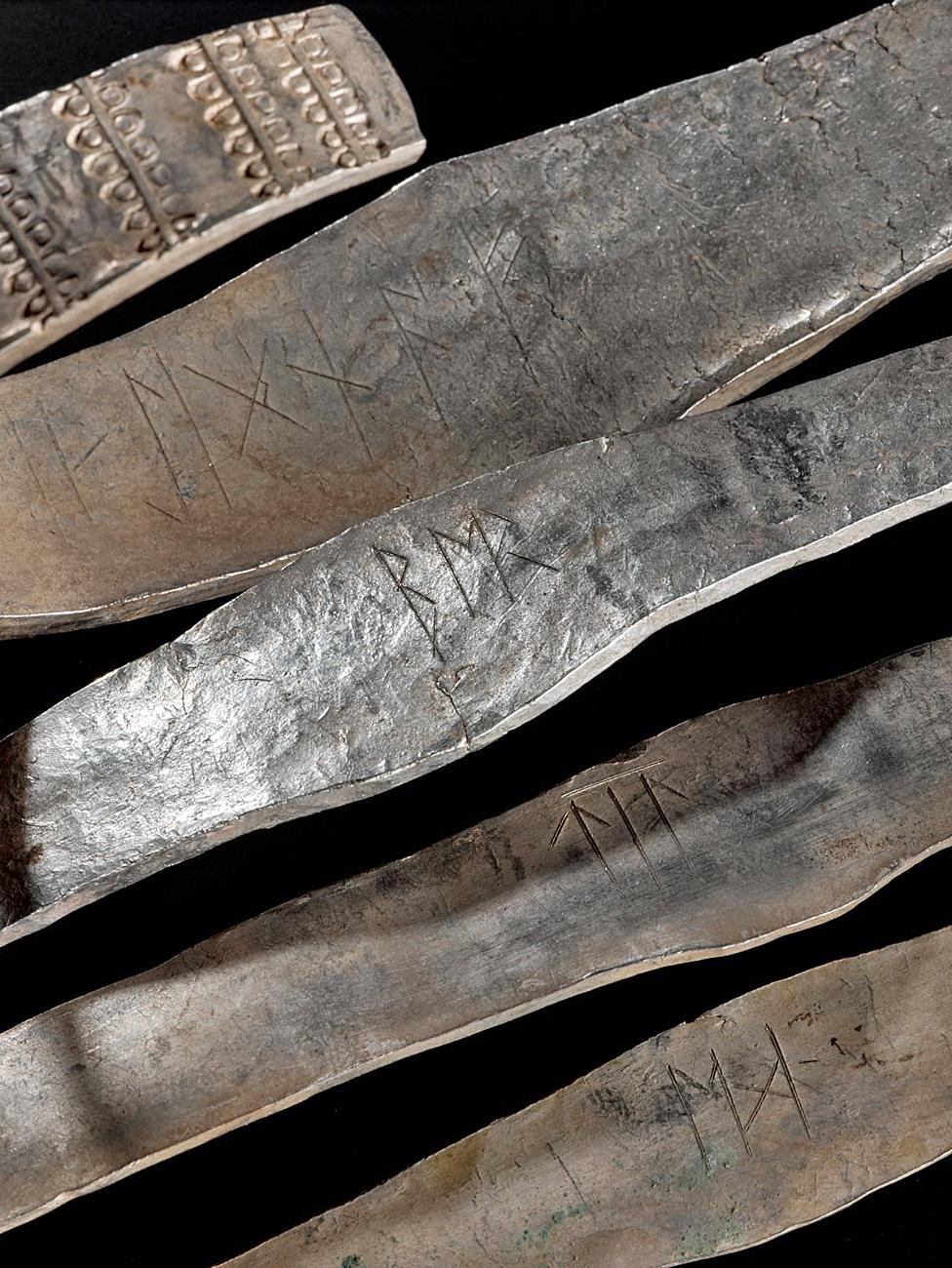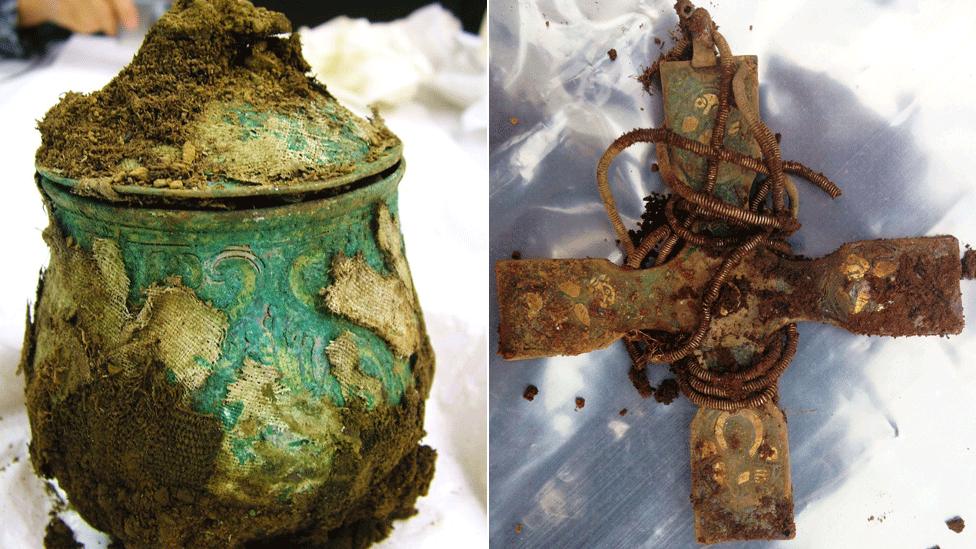Galloway Viking-age treasure: Egbert revealed as name of one owner
- Published

Research has revealed the name of the owner of the arm-rings in the Galloway hoard
Part of a Viking-age treasure hoard unearthed in Galloway belonged to a man named Egbert, research has concluded.
Examination of Anglo-Saxon runic inscriptions on silver arm-rings has revealed the name Ecgbeorht.
Dr Adrian Maldonado said it was "really exciting" to find a message left behind by someone who had deposited part of the hoard 1,100 years ago.
The National Museums Scotland research fellow said further study might help find out more about the owner.
The Galloway hoard was uncovered by a metal detectorist in south west Scotland in 2014.

National Museums Scotland acquired the hoard in 2017
It was acquired by National Museums Scotland three years later.
"We don't know any more about Egbert than his name right now but there's something really tantalising about connecting the Galloway hoard with a named person," said Dr Maldonado.
"Egbert is a common Anglo-Saxon name, and with more research on the rest of the contents of the hoard, we will be able to narrow down its dating and suggest some candidates from the historical record."
'Sea motorway'
He said it raised questions which could "transform thinking" about the Viking age in Scotland.
"These inscriptions are evidence that identity was complex in the past, just as it can be today," he said.
"Place-names in British, Gaelic, Norse and Old English were being coined in south west Scotland around the time of the Galloway hoard.
"The sea was more like a motorway, allowing people to communicate across linguistic boundaries, exchanging ideas and objects."

Five of the arm-rings were found to have inscriptions on them

The runes were read by Dr David Parsons of the University of Wales.
He said five of the silver arm-rings had inscriptions which may have recorded the names of the people who owned and buried them.
"Arm-rings of this sort are most commonly associated with Viking discoveries around the Irish Sea coastlands," he said.
"Yet these runes are not of the familiar Scandinavian variety common around this date on the nearby Isle of Man, but of a distinctively Anglo-Saxon type.
"And while several of the texts are abbreviated and uncertain, one is splendidly clear: it reads Ecgbeorht, Egbert, a common and thoroughly Anglo-Saxon man's name."
- Published15 September 2019

- Published19 December 2018

- Published26 October 2017
